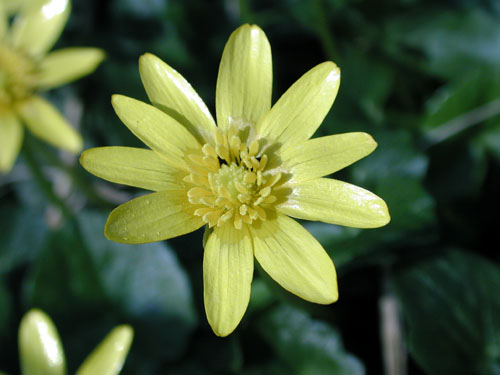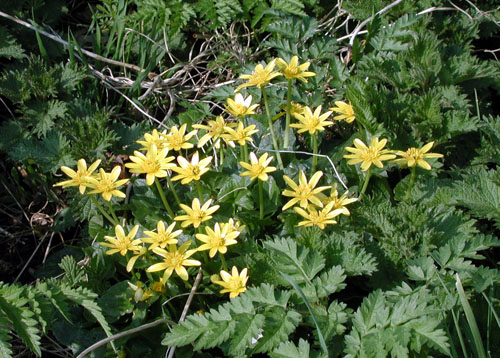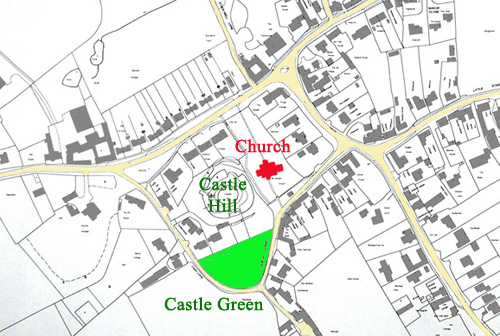
Lesser Celandine
FLOWER OF THE MONTH - MARCH 2007
LESSER CELANDINE (Ranunculus ficaria)

Lesser Celandine

Lesser celandines in Castle Green
This cheerful little flower is one of the earliest to bloom, from February onwards, and typically in woodland, on hedge banks or on open bare ground. One of its local names was “spring messenger”. Rather oddly, the name is derived from the Greek name for the swallow, although its first blooms do not coincide with the arrival of that summer visitor, so the connection is hard to see. Following the possibility of confusion over the name of last month’s flower, the aconite, here is another case where the popular English name of a plant is misleading: the lesser celandine, being of the buttercup family, is not related to the greater celandine (Chelidonium majus), which is a poppy, and certainly the two plants do not look very much alike.
The lesser celandine’s yellow blooms are on stalks up to 6 inches. The glossy green leaves are heart-shaped, and the plant grows from knobbly tubers – the supposed resemblance of these to haemorrhoids led in the eighteenth century to the plant being recommended as a treatment for piles, hence another popular name, pilewort. These tubers detach themselves easily from the roots, and so the celandine can spread very rapidly, becoming sometimes a garden weed.
It is interesting to note that the poet William Wordsworth’s favourite flower was, not the daffodil (!), but the “small” celandine, and he wrote three poems specifically to it:
Pansies, lilies, kingcups, daisies,
Let them live upon their praises:
Long as there’s a sun that sets,
Primroses will have their glory:
Long as there are violets,
They will have a place in story:
There’s a flower that shall be mine,
‘Tis the little Celandine.
A rather poor representation of this flower is carved on Wordsworth’s tomb in Grasmere churchyard.
The photographs above were taken in Castle Green but the celandine can be seen in many other places in the parish.

Based on O.S. Map. Crown Copyright Reserved.
Notes by George Metcalfe. Photos by Colin Wootton.